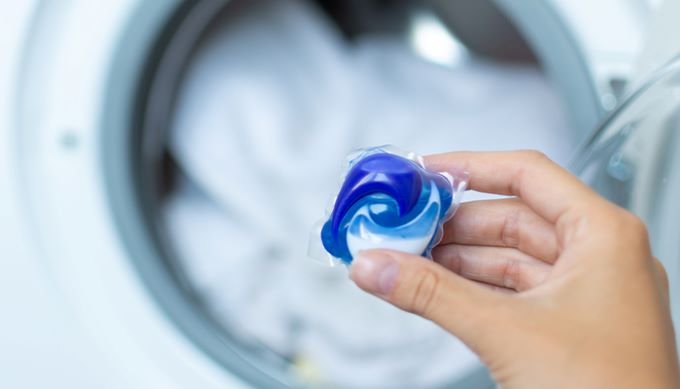Research In Action
Research In Action
Breadcrumb

Since their introduction into the US market in 2012, single-use liquid laundry detergent packets (LLDPs) have become increasingly popular with consumers. While busy parents and on-the-go college students appreciate their convenience, the pervasiveness of these packets has also presented new challenges for injury prevention.
Data suggests that LLDP exposures among children who break the detergent into their mouths, eyes, or skin seem substantially more toxic than traditional liquid or powder laundry detergents. Early data derived from US poison control centers indicated that kids younger than age 6 exposed to laundry pods were more likely to be hospitalized and to experience serious medical outcomes compared to those exposed to traditional laundry detergent.
Some of the most serious outcomes are for children who squirt the LLDP contents into their eyes. Over the past five years, The Poison Control Center at CHOP, along with colleagues from Pittsburgh, have received calls on almost 500 such cases involving children under age 6, with a significant proportion of serious outcomes in those age 2 and younger. After observing a disturbing pattern of injury in such a vulnerable population, we decided to investigate further.
Reports of Eye Injuries: Pennsylvania Region
Our research into eye injuries from LLDPs, as reported to the poison control centers of Pennsylvania (CHOP and Pittsburgh) from 2018-2022, found:
- 467 children with eye injuries attributed to LLDPs were reported to poison control.
- Almost half of the cases were reported for children 2 years and under.
- The most common injuries were eye irritation and conjunctivitis (inflammation of the lining of the white part of the eye and the inner eyelids).
- 7% of all cases were classified as moderate-severe:
- Corneal abrasions (scratches/damage to the outermost protective layer of the eye) were the most common finding in moderate-severe cases, impacting 14% of children age 2 and under (compared to ~5% of older children).
How to Prevent Injuries at Home
Clinicians can recommend the following strategies to families during National Poison Prevention Week and throughout the year:
- LLDPs are best kept out of sight and reach from children.
- Always leave LLDPs in their container and close/lock the container every time.
- If a child bites into a LLDP, remove it immediately. Wash the child’s hands and face and gently wipe out his or her mouth. Then call poison control at 1-800-222-1222.
- If a child squirts any of the LLDP contents into his or her eyes, gently rinse the eyes with running water for 15 minutes and call poison control at 1-800-222-1222.
- Parents of young children should carefully consider if LLDPs are appropriate consumer products to bring into their homes.
Impact of Public Policy
Policymakers can also make a difference and protect children. Recommendations include:
- Insist that LLDP containers be child-resistant in compliance with the Poison Prevention Packaging Act of 1970.
- Revise existing packaging standards to include unit-dose packaging (packages with one single dose of the medication) of individual LLDPs.
- Empower the US Consumer Product Safety Commission and ASTM International to continue looking at the products’ attractiveness to children, ease of package burst, and chemical composition to see if further injury reductions can be achieved.




